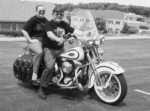Advertise Follow Us
Seeding & Planting
When In Doubt, Improvise
Here’s what one no-tiller did when all other seeding options failed with a Conservation Reserve Program field.
Read More
Fertility is First Priority for No-Tillers
Rather than hit new technology head-on, these Nebraska no-tillers found it pays to concentrate on just one area at a time.
Read More
Converting To Continuous No-Till
This Nebraska no-tiller makes continuous no-tillage work to his advantage with simple management techniques.
Read More
It’s What Works For You
Ed and Jim Myer have “personalized” no-tillage to meet their farm’s soil conditions.
Read More
No-Till Bikers!
Along with 139,000 other bikers from around North America, this Ohio farm couple was in Milwaukee last summer for the big 95th anniversary Harley-Davidson celebration.
Read More
Overcoming Planting Delays
When planting conditions are less than optimal, this no-tiller uses these sensible strategies.
Read More








